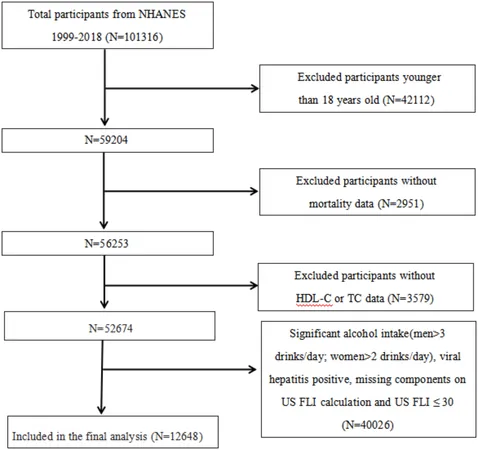
Revolutionary Lipid Ratio Could Change the Game in NAFLD Mortality Predictions
2025-04-23
Author: Jia
A Groundbreaking Study on NAFLD and Mortality
In a pioneering research effort, scientists have unveiled potential links between the non-high-density lipoprotein cholesterol to high-density lipoprotein cholesterol ratio (NHHR) and mortality rates among U.S. adults battling non-alcoholic fatty liver disease (NAFLD). This study harnesses data from the NHANES database, a comprehensive health survey collected by the CDC since 1999, covering a stark period of insights from 1999 to 2018.
Who Was Involved?
The research focused on an impressive cohort of 12,648 participants aged eighteen and above. Excluding individuals with excessive alcohol intake or missing information ensured a sharp focus on the health parameters directly linked to NAFLD. With ethical approval in place, participants shared lifestyle and health status information, allowing for a robust analysis.
Uncovering Key Findings: The NHHR
Researchers utilized the NHHR—a ratio of non-HDL-C to HDL-C—to assess the risk of cardiovascular disease and overall mortality. With most participants categorized into tertiles (Q1-Q3), those in the highest tertile displayed concerning indicators linked to poorer health outcomes. In layman’s terms, the higher the NHHR, the greater the danger of mortality.
Exploring the Link Between NHHR and Mortality Rates
The results were eye-opening. Over a median follow-up period of just over eight years, 1,659 deaths were recorded, 460 of which were due to cardiovascular diseases. The NHHR was shown to have a U-shaped relationship with all-cause mortality – too high or too low ratios indicated increased mortality risk.
Why Does This Matter?
The findings shed light on the critical importance of maintaining optimal lipid levels. The research indicates specific NHHR values—particularly around 2.67—that can serve as warning signs for healthcare professionals monitoring patients at risk of NAFLD and related mortality.
Broad Implications for Diabetes Patients
What’s more, the study noted an intensified risk among diabetic patients. This points toward a potent interaction between NHHR and diabetes when discussing mortality risk, emphasizing the need for awareness and direct management strategies for this vulnerable demographic.
The Bigger Picture: Next Steps
While this study provides essential insights into NHHR’s role, the limitations highlight the necessity for further research. The reliance on observational data calls for future randomized controlled trials to solidify these findings. This could pave new waves in proactive health strategies and targeted intervention, particularly in high-risk populations.
Your Health Matters: Takeaway Points
For those grappling with NAFLD or related risk factors, these discoveries stress the critical nature of monitoring cholesterol ratios. They could soon become key players in determining health outcomes and guiding lifestyle changes, offering hope to millions seeking better health.
 Brasil (PT)
Brasil (PT)
 Canada (EN)
Canada (EN)
 Chile (ES)
Chile (ES)
 Česko (CS)
Česko (CS)
 대한민국 (KO)
대한민국 (KO)
 España (ES)
España (ES)
 France (FR)
France (FR)
 Hong Kong (EN)
Hong Kong (EN)
 Italia (IT)
Italia (IT)
 日本 (JA)
日本 (JA)
 Magyarország (HU)
Magyarország (HU)
 Norge (NO)
Norge (NO)
 Polska (PL)
Polska (PL)
 Schweiz (DE)
Schweiz (DE)
 Singapore (EN)
Singapore (EN)
 Sverige (SV)
Sverige (SV)
 Suomi (FI)
Suomi (FI)
 Türkiye (TR)
Türkiye (TR)
 الإمارات العربية المتحدة (AR)
الإمارات العربية المتحدة (AR)